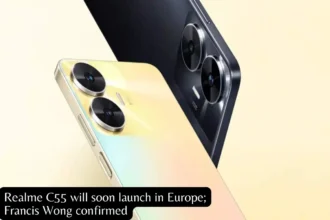Motorola has been a household name in the smartphone world for a long time but one major issue has plagued its reputation for years—its software update policy. For a brand that delivers great hardware and cool designs, the lack of software updates has been a thorn in the flesh of its users. Until recently, Motorola only offered 3 Android updates and this was only for its flagship devices. Midrange and budget devices got 2 updates while entry-level devices got none.
This is a big contrast to other brands that have set the bar higher, 7 years of software support. The backlash from Motorola’s users was loud and clear and good thing the brand listened. A big change in its software update policy has been announced and it seems they are serious about giving value to its customers. But is this enough to regain user trust and attract new buyers?
The Big Shift: Motorola Promises 5 Android Updates
Motorola’s new policy now promises 5 Android updates for select newer devices—a big jump from its previous policy. This started with the Motorola Edge 50 Neo which is the first device to get this new policy. The same applies to two other recent releases, Moto G75 and ThinkPhone 25.
The inclusion of Moto G75, a midrange device is interesting. Historically, Motorola’s midrange lineup has been treated as an afterthought when it comes to software support. By giving extended updates to G75, Motorola is setting a new standard and maybe this will be the start of better support for future midrange devices. But they haven’t expanded this policy to older devices or even to some of its high-end devices launched earlier in 2024.
The Unfair Treatment of Existing Flagship Devices
While the new policy is good, it has a big hole—older high-end devices are left out. Devices like Edge 50 Pro, Edge 50 Ultra and the latest Razr foldables which are marketed as premium devices are stuck with the old policy of 3 major updates. For users who bought these expensive devices, this feels like a slap in the face.
In a competitive market where brands like Google is retroactively giving software support to their older Pixel devices, Motorola’s stance seems shortsighted. Premium users expect premium after-sales service and software support is part of that. If Motorola wants to retain its loyal customers and attract high-end buyers, they must revisit this decision.
Speeding Up Software Rollouts: A Mixed Bag
It’s not just about the number of updates; the timeliness of software rollouts matters too. Motorola has struggled with this for years with months-long delays. For example, Android 14 was released in October 2023 and took almost 3 months to reach the first Motorola devices.
But there’s hope. With Android 15 Motorola has made big progress and even beat some of its bigger competitors. They launched their beta program in mid-October 2024, a week before Samsung’s One UI 7 beta. And in a surprise move, they started rolling out the stable Android 15 build a day after Samsung’s beta launch. Models like Edge 50 Fusion and Edge 50 Ultra were the first to get the update.
This is good to see. If Motorola can keep this up they might finally lose their reputation of slow updates and gain back the trust of their users.
What Still Needs Improvement?
While the new policy and faster rollouts are good, there’s still more to be done:
- Universal Policy Application: Motorola needs to apply the 5-update policy to their older flagships. This would be true customer satisfaction.
- Consistency Across All Price Segments: Entry-level and budget devices still get very little support. A more balanced approach would make every customer feel valued regardless of the price range.
- Regular Security Updates: Besides Android version updates Motorola needs to provide timely and frequent security patches to protect user data.
- Transparency and Communication: Motorola should communicate clearly about its update schedule so users can better manage their expectations.
Why the Update Policy Matters More Than Ever
In today’s competitive smartphone market software support is as important as hardware. With brands like Apple and Samsung setting the bar by providing long-term updates, consumers are now making purchase decisions based on device longevity. For Motorola to stay relevant, especially in markets where users are tech savvy, they need to make software updates a key part of their strategy.
Conclusion: A Good Start but More to Do
Motorola’s 5-year update policy for select new devices is a good start but it’s just the beginning. Leaving out older flagships and not having a uniform policy across all price segments is a big issue. And while rollout speed has improved, consistency is key to user trust.
If they can keep improving they might regain their lost ground in the smartphone market. For now, they gave their fans a reason to be hopeful but only time will tell if this translates to long-term success.
Do you own a Motorola smartphone? How do you feel about the new update policy? Share your thoughts and experiences in the comments below.








